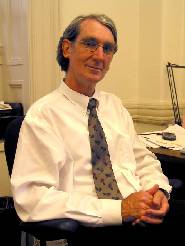
The face of the Earth is figured by continents and oceans whose present shape and positions are transients in the history of the planet. Earth is a dynamic engine of change. It is capable of tearing itself apart and has done so repeatedly throughout its history. The outer layers of the Earth are the solid thermal boundary layer of deep convective motions in the mantle and are primarily responsive to the deeper forces. Just how the Earth can tear itself apart, create new oceans by seafloor spreading, consume those oceans by subduction and continue that cycle over millions of years is an enduring quest for Earth scientists who study the solid Earth. How can we capture the true dymanics of the Earth? Seismic reflection methods enable one to "see" into the Earth but only as an instantaneous snapshot of "now". Earthquake studies monitor the present level of activity. What we are advancing toward are ways to capture the time evolution of active systems on mid-ocean ridges and rifting systems by making crude movies time lapse movies using reflection images taken at different times. These borrow old production techniques and re-form them for study of basic Earth processes.
Beyond this I am increasingly compelled to think about science and its role in the elevation of the world's poor. Science is the engine that drives economic progress in the developed world, but little science is practiced in poor countries and the benefits of our science have not come to the poor. How can science, which has brought so much to us, help elevate the poorest people on earth. With a third of the world's people living in poverty this has become an urgent question.
U6240: Environmental Science for Sustainable Development